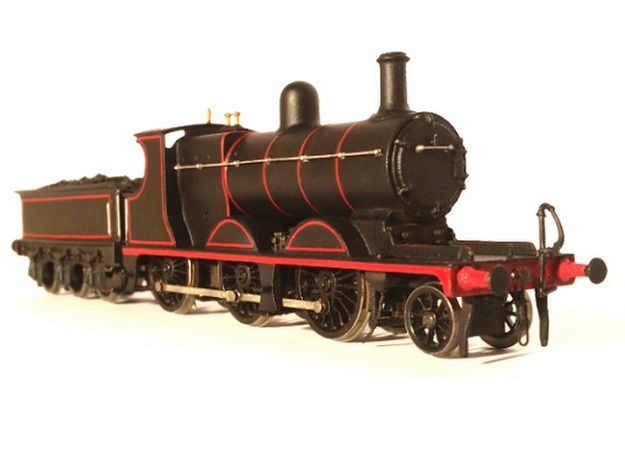
Gavin Rose of Sparkshot Custom Creations has been interested in British outline railways since a very early age and has been making models since he was 12 years old. Almost 20 years later, he’s still at it, now with the help of 3D design and 3D printing. Gavin does a tremendous job of leveraging 3D printing to create model trains that are otherwise unavailable through mass-manufactured models.
How’d you get into 3D modeling of trains?
Prior to doing 3D modeling I used to (and still do) railway modeling the usual ways — build kits or ‘bash’ them — modifying them to represent a different version of an engine, either real or theoretical. Before this, I dabbled in military modeling, but the bug has always been for railways more than anything. Amongst a few other things, 3D printing creates the opportunity for me (and you!) to now own models of railway prototypes the mainstream firms haven’t created. You have to buy your own wheels, motors and bits for the printed model but once done, it’s great to see the engine you’ve always longed for pottering about on a layout.
You mention that models of railway prototypes you’re building aren’t available from mainstream firms. Tell us about that and what you’re focusing on.
Most of the mainstream Ready to Run (RTR) manufacturers concentrate on the latter British Railways (BR) period of railway history and I can only estimate this is because most of the people alive today remember that period, and not earlier. As such, nostalgia has its power well established in BR territory, which undoubtedly is the reason that the mainstream companies cater to BR models. This means that newcomers to the hobby end up with a choice that is predominantly BR so sales of those products increase, mainstream companies keep making them … and so the cycle continues.
There’s nothing wrong with BR, but the post-Grouping (and especially pre-Grouping) suffers dreadfully, and many locomotive classes aren’t given any attention while the popular ones are redone over and over and over. This is a shame, and along with it goes some of the history and knowledge of what our railways looked like, once upon a time. If more people were to model the earlier periods we could hopefully get back to some degree and accurate portrayal of what was once lost and my hope is that 3D printing will help to bring the past back to the present. Currently Sparkshot Custom Creations is concentrating on the earlier periods, so keep an eye out. 🙂
We love that you’re using modern-day manufacturing to bring back the past! Tell us more about how you design these unique models.
For customization, I have done a series of variants of most of the locomotive classes. Some are real variants, but a lot are freelance also to enable me and anyone who is inclined to model certain things in a more theoretical rather than factual way. Obvious detail variations are the most important such as the standard VS extended tank E2 and the various chimneys some engines ran with. The new-to-the-SCC range Furness J1 class has a separate pack of chimneys to order that allow the engine to take on different guises, the simple change in chimney can make all the difference. People have asked me to make a few alterations here and there and I have done it; the creation of the Cambrian Class 61 was due to consultation to give the Furness K2 some alterations but the work became more elaborate than originally envisioned as research continued. It has however produced a new loco choice all together, so all good!
At the time of this interview, the next engine to be completed and released for sale will be the Furness Railway J1 Class. There is already a Furness Railway 21 Class that’s also known as the K2 available in several variants, so for the meantime, I’m concentrating on this particular railway company and then will move on to another.
Check out Gavin’s incredible model train designs in his shop here. He’s created some videos on post-processing his models here and here if you’re looking for a glance into his methods.
He’s also requested that if anyone has built, painted, and are running his creations on a model railway, to please send him photos or video. As Gavin says, “I’d very much like to see what people do with the kits, there’s something quite ‘happifying’ seeing your own designs all completed by another!”


